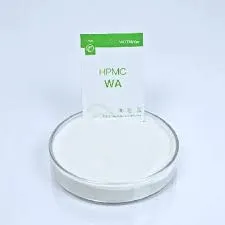
ಡಿಸೆ . 11, 2024 11:28 Back to list
china hpmc-hydroxypropyl methyl cellulose
The Multifaceted Applications of Hydroxypropyl Methyl Cellulose (HPMC) in China
Hydroxypropyl Methyl Cellulose (HPMC) is a versatile derivative of cellulose that has found its way into numerous industries due to its excellent properties. Initially developed for use in pharmaceuticals, HPMC is now widely utilized in construction, food, cosmetics, and personal care products, among others. China plays a significant role in the production and application of HPMC, capitalizing on its unique characteristics to meet the demands of various sectors.
What is HPMC?
HPMC is a non-ionic, water-soluble cellulose ether produced from natural cellulose. The modification process imparts desirable qualities such as improved solubility, thermal stability, and film-forming abilities. HPMC is odorless, tasteless, and has low toxicity, making it a preferred choice in many applications.
Applications in the Construction Industry
One of the most prominent applications of HPMC is in the construction industry. It is commonly used as an additive in cement-based products like tile adhesives, water-resistant coatings, and plaster. Its ability to retain water significantly enhances the workability and adhesion of these materials, allowing for smoother application and an extended open time, which is particularly beneficial in large-scale construction projects. Furthermore, HPMC contributes to improved strength and durability, making buildings more resilient to environmental factors.
Role in Pharmaceuticals
In the pharmaceutical industry, HPMC serves multiple purposes. It is primarily used as a pharmaceutical excipient in tablets and capsules, where it acts as a binder, enabling the formation of uniform and stable dosage forms. Its controlled release properties make it invaluable in formulating sustained-release drug delivery systems, ensuring that medications are released into the body over an extended period. Additionally, HPMC is employed in various topical formulations due to its excellent film-forming capabilities and skin compatibility.
china hpmc-hydroxypropyl methyl cellulose

Usage in the Food Industry
HPMC's applications extend to the food industry as well. It acts as a food thickener, emulsifier, and stabilizer, enhancing the texture and consistency of various products. In baked goods, HPMC improves moisture retention, contributing to a longer shelf life. Its use in sauces and dressings provides a desirable viscosity without altering the flavor profile. Furthermore, the growing trend towards gluten-free products has led to an increased demand for HPMC as a substitute for gluten, helping to improve the texture and structure of gluten-free baked goods.
Innovations in Cosmetics and Personal Care
HPMC is also widely used in the cosmetics industry, where it serves as a thickening agent, film-forming agent, and emulsifier in various formulations like lotions, creams, and gels. Its ability to enhance the texture and stability of cosmetic products makes it a favored ingredient for formulators. Moreover, HPMC is becoming increasingly popular in the production of eco-friendly cosmetics, as it is derived from natural cellulose and is biodegradable, aligning with the growing consumer demand for sustainable and environmentally friendly products.
Environmental and Health Safety
One of the advantages of using HPMC is its non-toxic and biodegradable nature. This aligns with global trends toward more environmentally friendly products. In China, where industrial growth often raises concerns about environmental impact, HPMC stands out as a safer alternative to many synthetic additives. Its low toxicity and environmental profile make it suitable for a variety of applications without compromising safety.
Conclusion
Hydroxypropyl Methyl Cellulose is truly a remarkable compound with extensive applications across multiple industries, particularly in China. Its versatility, safety, and efficiency make it a preferred choice for manufacturers aiming to enhance product performance while meeting the growing demands for sustainability. As industries continue to innovate and expand, the demand for HPMC is expected to rise, solidifying its role as a crucial ingredient in modern manufacturing and formulation processes. As we move towards a more sustainable future, HPMC will undoubtedly play an essential part in bridging the gap between function and environmental responsibility.
-
Unlocking the Benefits of HPMC Products: A Gateway to Versatile Applications
NewsAug.07,2025
-
Unleashing the Potential of HPMC Ashland: A Comprehensive Look
NewsAug.07,2025
-
Tile Bonding Cellulose: The Key to Superior Adhesion and Durability
NewsAug.07,2025
-
Hydroxypropyl Methylcellulose Powder: The Versatile Component in Modern Pharmaceuticals
NewsAug.07,2025
-
Hydroxyethyl Cellulose: The Versatile Solution for Various Industries
NewsAug.07,2025
-
Hydroxyethyl Cellulose (HEC): The Versatile Polymer for Various Applications
NewsAug.07,2025







